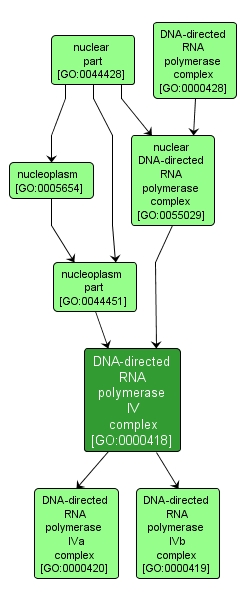| Desc: |
RNA polymerase IV is a multisubunit RNA polymerase complex found in the nucleus of plants. In addition to RNA polymerases I, II, and III, the essential RNA polymerases present in all eukaryotes, plants have two additional nuclear RNA polymerases, Pol IV and Pol V, that play nonredundant roles in siRNA-directed DNA methylation and gene silencing. Pol IV is required for siRNA production and Pol V is required for generating noncoding transcripts at target loci. Pol IV is composed of subunits that are paralogous or identical to the 12 subunits of Pol II. The largest and second-largest subunits of Pol IV are the catalytic subunits and share similarity with the corresponding subunits of other eukaryotic and bacterial multisubunit RNA polymerases. |














